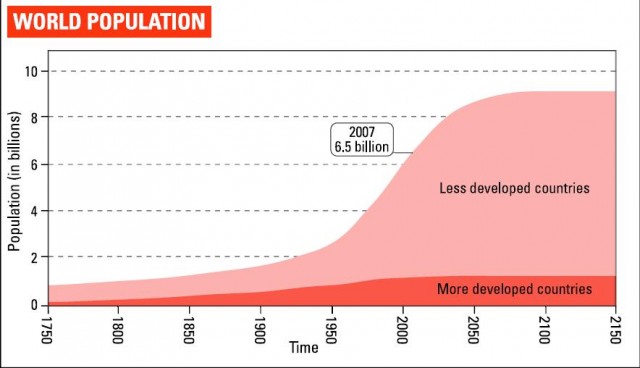Population growth
Is it a rule of nature that the population keeps on increasing? It might seem so from the relentless graphs of world population that adorn most books on the subject, including this one.
But this century's newspapers seem to contain more headlines about a dearth of people than about a surplus. The reason is that people in the developed world are living longer and are seeing less reason to replace themselves. In 2006, there were four times as many people of working age in the developed world as there were over-65s, and it is predicted that the ratio could reach three to one by 2020. The most extreme case is Italy, where there could be less than two people of working age for each pensioner by then.
The moral panic over people living longer is rooted in the financial fears of pensions providers and health services, which worry how they will cope in this new world.
This is not The Rough Guide To Pensions And Health Provision, so we do not need to solve that problem here. But the fear it encapsulates does contain an important message. Take the US as an example. Every year about 8 people die out of every 1000 in its population, while 14 are born. Result – population growth of 6 people per 1000. So far, it has turned out to be easier to make people live longer than to get them to reproduce less.
But it seems that the population of the Earth reached its maximum rate of growth in about 1990. Since then, changes such as the improved status of women in many societies and the availability of contraception have reduced growth. If these trends continue, world population will grow to about 9 billion during the present century but will be on the way down by the century's end. This forecast contains a huge number of assumptions. One is that there is no major disruption to social progress, such as an asteroid strike or nuclear war that would cancel all bets. More subtly, it assumes that general Western-style social progress will be embraced in areas such as Africa which have missed out
on past decades of development.
If population peaks at about 9 billion, humans will still be by far the most numerous species of large land animal on the Earth. The issue is what sort of demands they will be making on the rest of the Earth. By that time, it is likely that the high days of oil and gas consumption will have passed, though perhaps not of coal. It is certain that most of the people alive will be living in cities. It is very possible that they will be living in a world whose climate is tangibly warmer than today's. Whether we are clever enough to build a sustainable world on this foundation is less clear.
